English
CONTENTS
FOREWORD
INTRODUCTION
1 Scope
2 Normative references
3 Terms and definitions
4 General
4.1 General requirements
4.2 General notes on tests
5 Ratings
5.1 Preferred rated operating voltage ranges
5.2 Preferred rated currents
5.2.1 General
5.2.2 Rated current for signal or control purposes
5.2.3 Accessories not suitable for making and breaking an electrical circuit under load
5.2.4 Accessories suitable for, or not suitable for, making and breaking an electrical circuit under load
6 Connection between the power supply and the electric vehicle
6.1 General
6.2 Types of vehicle inlets
6.3 Types of vehicle connectors
6.4 Universal interface
6.5 Basic interface
6.6 D.C. configurations
6.7 Combined interface
6.8 Contact sequencing
7 Classification of accessories
7.1 According to purpose
7.2 According to the method of connecting the conductors
7.3 According to serviceability
7.4 According to electrical operation
7.5 According to interface
7.6 According to use with cable management systems
7.7 According to the locking and interlock functions:
7.7.1 According to locking facilities
7.7.2 According to interlock facilities:
7.8 According to the presence of shutter(s)
8 Marking
9 Dimensions
10 Protection against electric shock
11 Size and colour of protective earthing conductors
12 Provisions for protective earthing
13 Terminals
13.1 Common requirements
13.2 Screw type terminals
13.3 Mechanical tests on terminals
14 Interlocks
14.1 Accessories with interlock
14.2 Accessories with integral switching device
14.3 Control circuit devices and switching elements
14.4 Pilot contacts and auxiliary circuits
15 Resistance to ageing of rubber and thermoplastic material
16 General construction
17 Construction of socket-outlets
17.1 General
17.2 Contact tubes
18 Construction of plugs and vehicle connectors
19 Construction of vehicle inlets
20 Degrees of protection
21 Insulation resistance and dielectric strength
22 Breaking capacity
23 Normal operation
24 Temperature rise
25 Flexible cables and their connection
25.1 Strain relief
25.2 Requirements for plugs and vehicle connectors
25.2.1 Non-rewirable plugs and vehicle connectors
25.2.2 Rewirable plugs and vehicle connectors
25.3 Plugs and vehicle connectors provided with a flexible cable
26 Mechanical strength
26.1 General
26.2 Degree of protection
26.3 Rewirable plugs and vehicle connectors
26.4 Non-rewirable accessories
26.5 Cable glands
26.6 Shutters
26.7 Insulated end caps
26.8 Change of temperature test
26.9 Pull test
27 Screws, current-carrying parts and connections
28 Creepage distances, clearances and distances
29 Resistance to heat, to fire and to tracking
30 Corrosion and resistance to rusting
31 Conditional short-circuit current withstand test
31.1 General
31.2 Ratings and test conditions
31.3 Test circuit
31.4 Calibration
31.5 Test procedure
31.6 Behaviour of the equipment under test
31.7 Acceptance conditions
32 Electromagnetic compatibility
32.1 Immunity
32.2 Emission
33 Vehicle driveover
Bibliography
Figures
Figure 1 – Diagram showing the use of the accessories
Figure 2 – Examples of terminals
Figure 3 – Standard test finger
Figure 4 – Gauge “A” for checking shutters
Figure 5 – Gauge “B” for checking shutters
Figure 6 – Gauges for testing insertability of round unprepared conductors having the maximum specified cross-section
Figure 7 – Equipment test arrangement
Figure 8 – Apparatus for checking the withdrawal force
Figure 9 – Verification of the latching device
Figure 10 – Circuit diagrams for breaking capacity and normal operation tests
Figure 11 – Apparatus for testing the cable anchorage
Figure 12 – Ball Impact test
Figure 13 – Arrangement for mechanical strength test for plugs and vehicle connectors
Figure 14 – Apparatus for flexing test
Figure 15 – Diagram of the test circuit for the verification of short-circuit current withstand of a two-pole equipment on a single-phase a.c. or d.c.
Figure 16 – Diagram of the test circuit for the verification of short-circuitcurrent withstand of a three-pole equipment
Figure 17 – Diagram of the test circuit for the verification of short-circuit current withstand of a four-pole equipment
Tables
Table 1 – Compatibility of mating accessories at vehicle
Table 2 – Overview of the universal vehicle interface
Table 3 – Overview of the basic vehicle interface
Table 4 – Overview of the d.c. vehicle interface
Table 5 – Overview of the combined a.c./d.c. vehicle interface
Table 6 – Short-time test currents
Table 7 – Size for conductors
Table 8 – Values for flexing under mechanical load test
Table 9 – Value for terminal pull test
Table 10 ( Withdrawal force with respect to ratings
Table 11 – Cable length used to determine pull force on retaining means
Table 12 – Gauges to measure withdrawal force
Table 13 – Diameter of pins of the test plug
Table 14 – Maximum withdrawal force
Table 15 – Test voltage for dielectric strength test
Table 16 – Breaking capacity
Table 17 – Normal operation
Table 18 – Test current and nominal cross-sectional areas of copper conductors for temperature rise test
Table 19 – Pull force and torque test values for cable anchorage
Table 20 – Impact energy for ball impact test
Table 21 – Mechanical load flexing test
Table 22 – Torque test values for glands
Table 23 – Pulling force on insulated end caps
Table 24 – Tightening torque for verification of mechanical strength of screw-type terminals
Français
SOMMAIRE
AVANT-PROPOS
INTRODUCTION
1 Domaine d’application
2 Références normatives
3 Termes et définitions
4 Généralités
4.1 Exigences générales
4.2 Généralités sur les essais
5 Caractéristiques assignées
5.1 Plages des tensions d'emploi assignées recommandées
5.2 Courants assignés recommandés
5.2.1 General
5.2.2 Courant assigné pour les fonctions de signal ou de contrôle
5.2.3 Appareils ne permettant pas l'établissement et la coupure d'un circuit électrique en charge
5.2.4 Appareils permettant, ou ne permettant pas, l'établissement et la coupure d'un circuit électrique en charge
6 Connexion entre l'alimentation électrique et le véhicule électrique
6.1 Généralités
6.2 Types de socles de connecteur de véhicule
6.3 Types de prises mobiles de véhicule
6.4 Interface universelle
6.5 Interface basique
6.6 Configurations c.c.
6.7 Interface combinée
6.8 Séquencement des contacts
7 Classification des appareils
7.1 Selon le besoin
7.2 Selon le mode de raccordement des conducteurs
7.3 Selon la réparabilité
7.4 Selon les manœuvres d'un point de vue électrique
7.5 Selon leur interface
7.6 Selon l'utilisation avec systèmes de gestion du câble
7.7 Selon les fonctions de verrouillage (blocage et verrouillage)
7.7.1 Selon les dispositifs de blocage
7.7.2 Selon les dispositifs de verrouillage
7.8 Selon la présence d'obturateur(s)
8 Marquage
9 Dimensions
10 Protection contre les chocs électriques
11 Section et couleur des conducteurs de terre
12 Dispositions pour la mise à la terre
13 Bornes
13.1 Exigences communes
13.2 Bornes à vis
13.3 Essais mécaniques sur les bornes
14 Dispositifs de verrouillage
14.1 Appareils avec dispositif de verrouillage
14.2 Appareils avec dispositif d'interruption incorporé
14.3 Dispositifs pour circuit de commande et éléments de l'interrupteur
14.4 Contacts pilotes et circuits auxiliaires
15 Résistance au vieillissement du caoutchouc et des matériaux thermoplastiques
16 Construction générale
17 Construction des socles de prise de courant
17.1 Généralités
17.2 Alvéoles
18 Construction des fiches et des prises mobiles de véhicule
19 Construction des socles de connecteur de véhicule
20 Degrés de protection
21 Résistance d'isolement et rigidité diélectrique
22 Pouvoir de coupure
23 Fonctionnement normal
24 Échauffement
25 Câbles souples et leur connexion
25.1 Décharge de tension
25.2 Exigences pour fiches et prises mobiles de véhicule
25.2.1 Fiches et prises mobiles de véhicule non-démontables
25.2.2 Fiches et prises mobiles de véhicule démontables
25.3 Fiches et les prises mobiles de véhicule équipées d'un câble souple
26 Résistance mécanique
26.1 Généralités
26.2 Degrés de protection
26.3 Fiches et prises mobiles de véhicule démontables
26.4 Appareils non démontables
26.5 Presse-étoupe
26.6 Obturateurs
26.7 Embouts isolants
26.8 Essai de changement de température
26.9 Essai de traction
27 Vis, parties transportant le courant et connexions
28 Lignes de fuite, distances dans l'air et distances
29 Résistance à la chaleur, au feu et aux courants de cheminement
30 Corrosion et résistance à la rouille
31 Essai de tenue au courant de court-circuit conditionnel
31.1 Généralités
31.2 Caractéristiques assignées et conditions d'essai
31.3 Circuit d'essai
31.4 Étalonnage
31.5 Procédure d'essai
31.6 Comportement des appareils en essai
31.7 Conditions d'acceptation
32 Compatibilité électromagnétique (CEM)
32.1 Immunité
32.2 Émission
33 Roulage de véhicule sur un appareil
Bibliographie
Figures
Figure 1 – Schéma indiquant l’utilisation des appareils
Figure 2 – Exemples de bornes
Figure 3 – Doigt d'épreuve normalisé
Figure 4 – Calibre "A" de vérification des obturateurs
Figure 5 – Calibre "B" de vérification des obturateurs
Figure 6 – Calibres pour soumettre à essai la possibilité d'introduction des conducteurs circulaires sans préparation spéciale de la section maximale spécifiée
Figure 7 – Disposition de l'appareillage d'essai
Figure 8 – Appareil de contrôle de la force d'extraction
Figure 9 – Vérification du dispositif de retenue
Figure 10 – Schémas du circuit pour les essais de pouvoirde coupure et de fonctionnement normal
Figure 11 – Appareil d'essai du dispositif d'ancrage de câble
Figure 12 – Appareil d'essai d'impacts de balle
Figure 13 – Dispositif pour l'essai de la résistance mécanique des fiches et des prises mobiles de véhicule
Figure 14 – Appareil d'essai de flexion
Figure 15 – Schéma du circuit d'essai pour la vérification de la tenue au courant de court-circuit d'un matériel bipolaire en monophasé, en courant alternatif ou en courant continu
Figure 16 – Schéma du circuit d'essai pour la vérification de la tenue au courant de court-circuit d'un matériel tripolaire
Figure 17 – Schéma du circuit d'essai pour la vérification de la tenue au courant de court-circuit d'un matériel tétrapolaire
Tableaux
Tableau 1 – Compatibilité des appareils complémentaires sur véhicule
Tableau 2 – Présentation de l'interface universelle pour véhicule
Tableau 3 – Présentation de l'interface basique pour véhicule
Tableau 4 – Présentation de l'interface c.c. pour véhicule
Tableau 5 – Présentation de l'interface combinée c.a./c.c. pour véhicule
Tableau 6 – Courants d'essai brefs
Tableau 7 – Section des conducteurs
Tableau 8 – Valeurs pour l'essai de flexion sous charge mécanique
Tableau 9 – Valeurs pour l'essai de traction sur borne
Tableau 10 – Force d'extraction en fonction des caractéristiques assignées
Tableau 11 – Longueur de câble utilisée pour déterminer la force de traction sur le dispositif de retenue
Tableau 12 – Calibres pour mesurer la force d’extraction
Tableau 13 – Diamètre des broches de la fiche d’essai
Tableau 14 – Force maximale d’extraction
Tableau 15 – Tension d'essai pour l'essai de rigidité diélectrique
Tableau 16 – Pouvoir de coupure
Tableau 17 – Fonctionnement normal
Tableau 18 – Courant d'essai et section nominale des conducteurs en cuivre pour l'essai d'échauffement
Tableau 19 – Valeurs d'essai des forces de traction et de couple pour ancrage de câble
Tableau 20 – Énergie d'impact pour l'essai d'impacts de balle
Tableau 21 – Essai de flexion sous charge mécanique
Tableau 22 – Valeurs du couple d'essai pour les presse-étoupe
Tableau 23 – Force de traction sur les embouts isolants
Tableau 24 – Couple de serrage pour la vérification de la résistance mécanique des bornes à vis
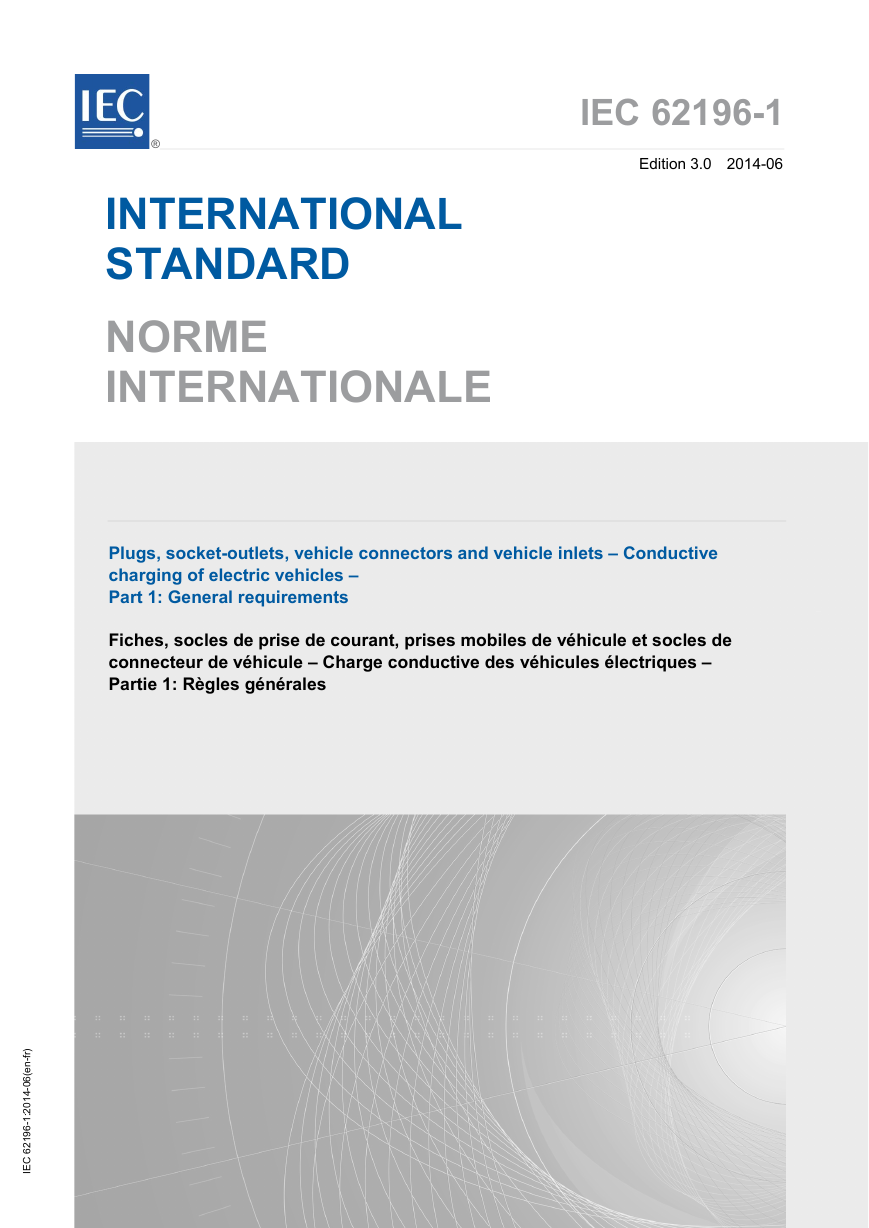
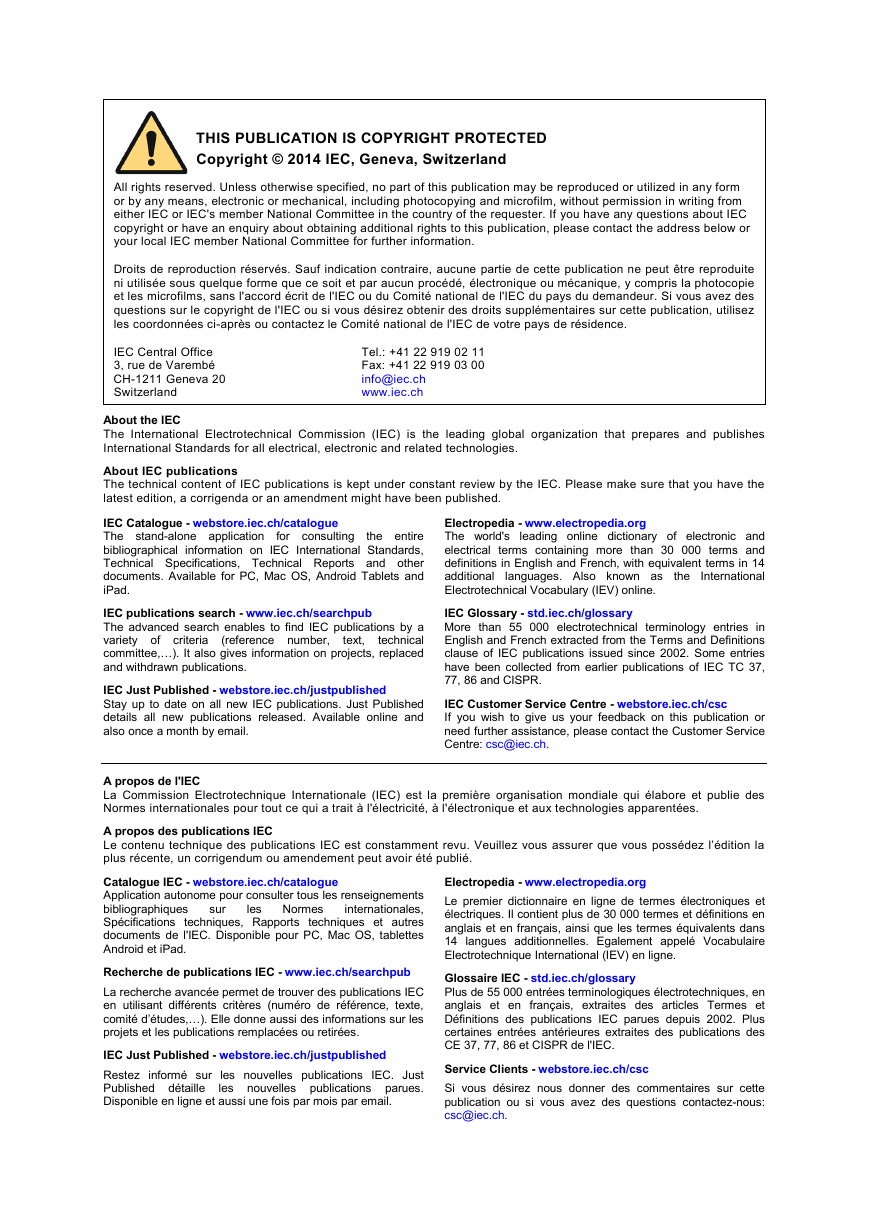
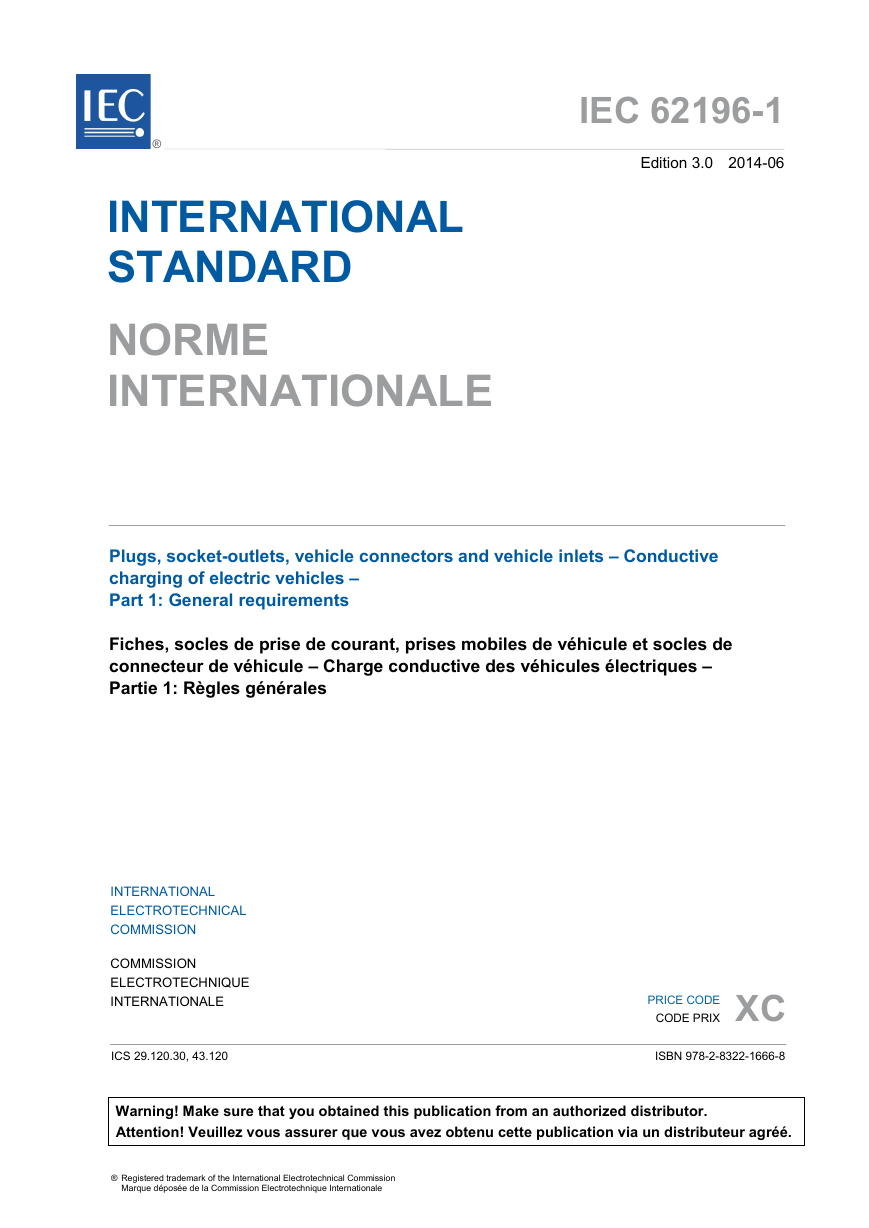
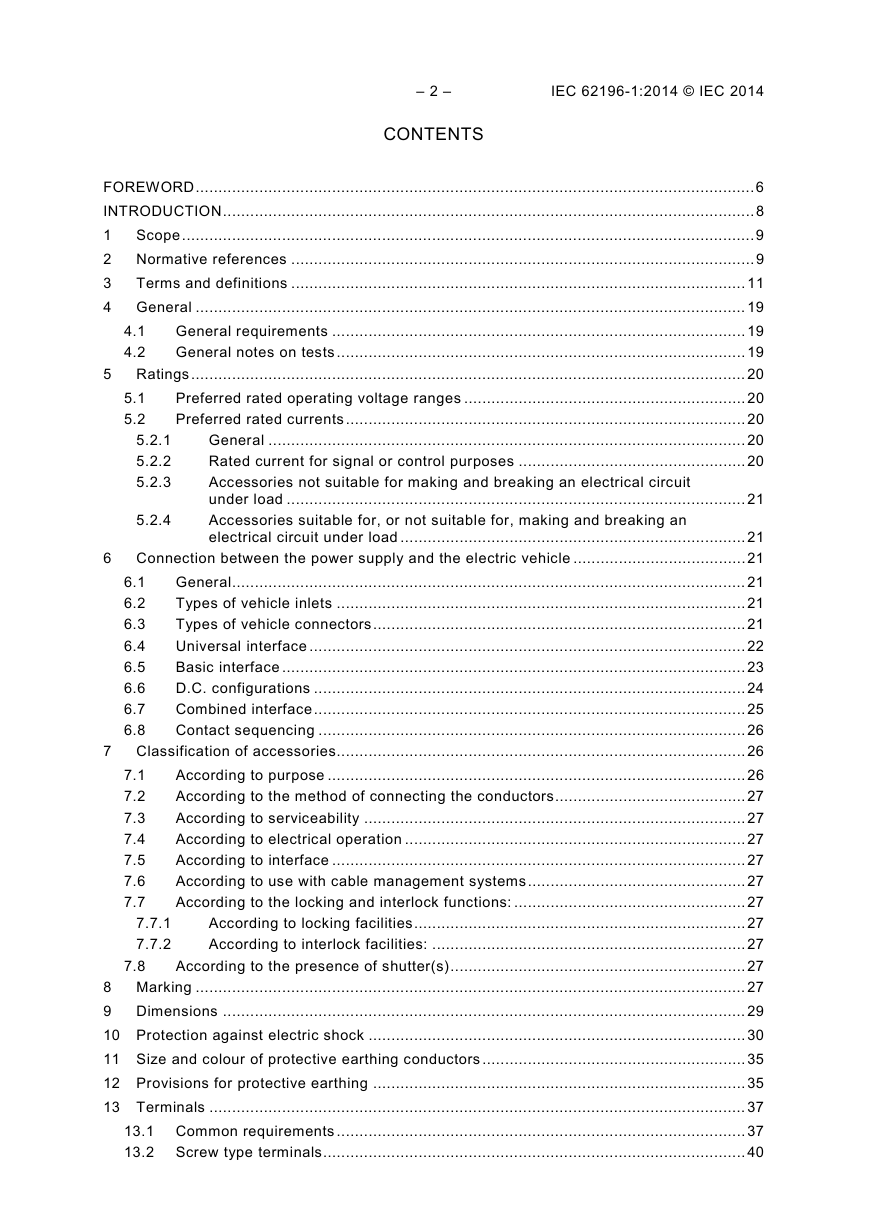
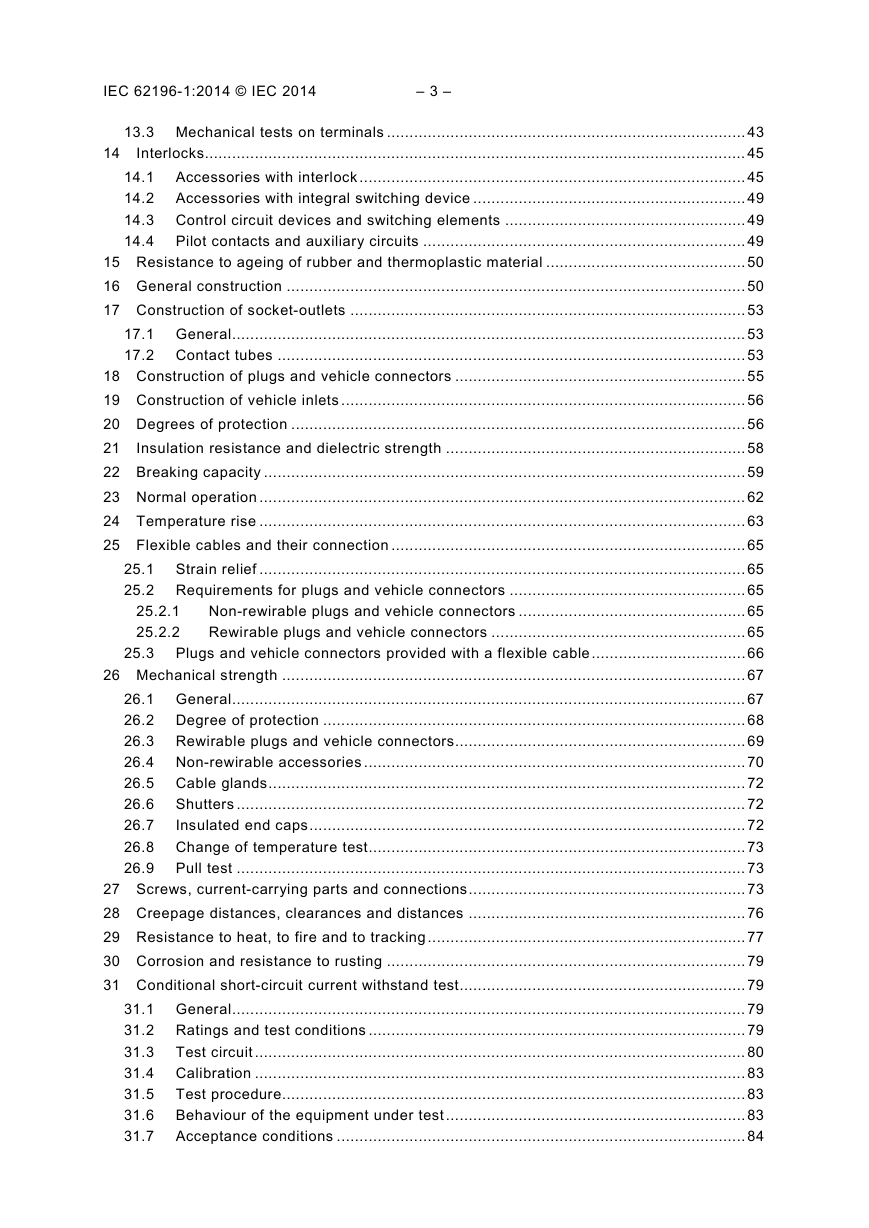
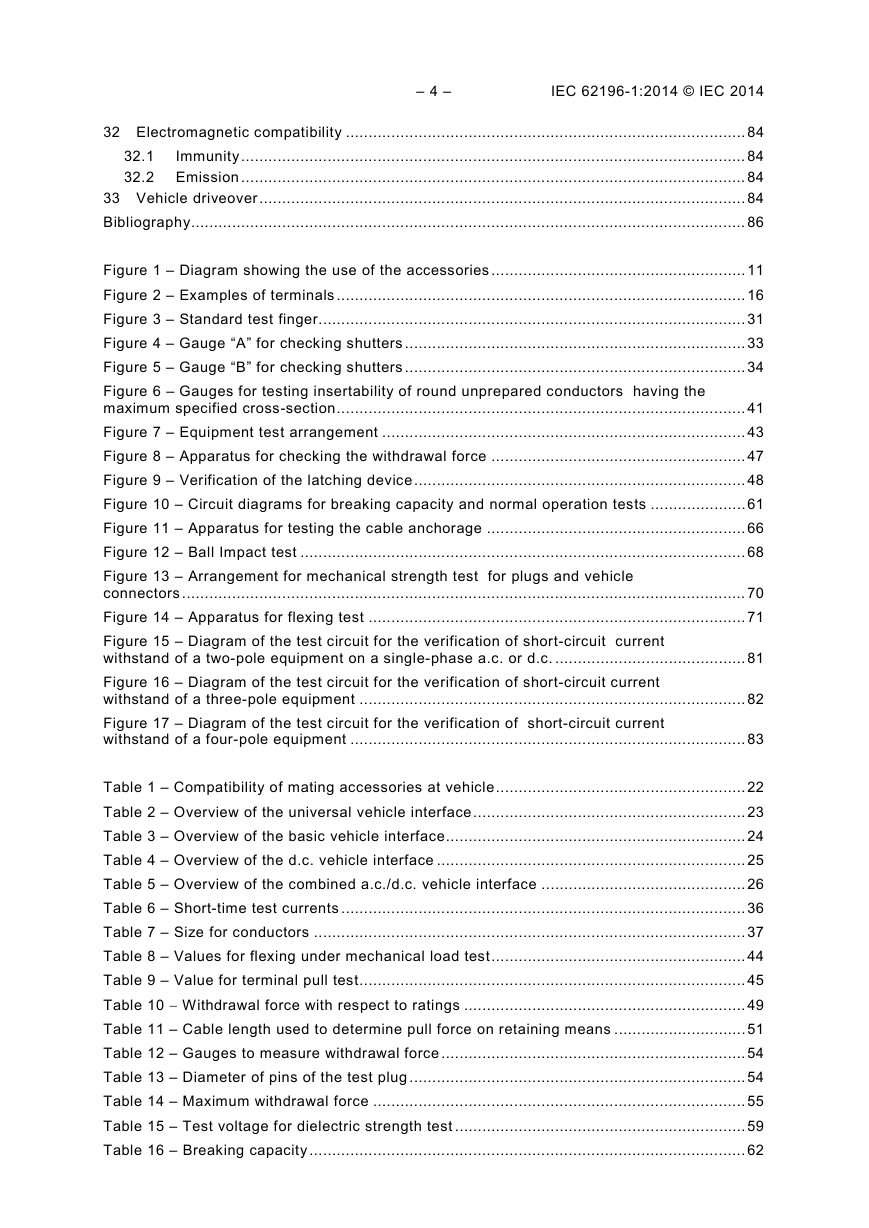
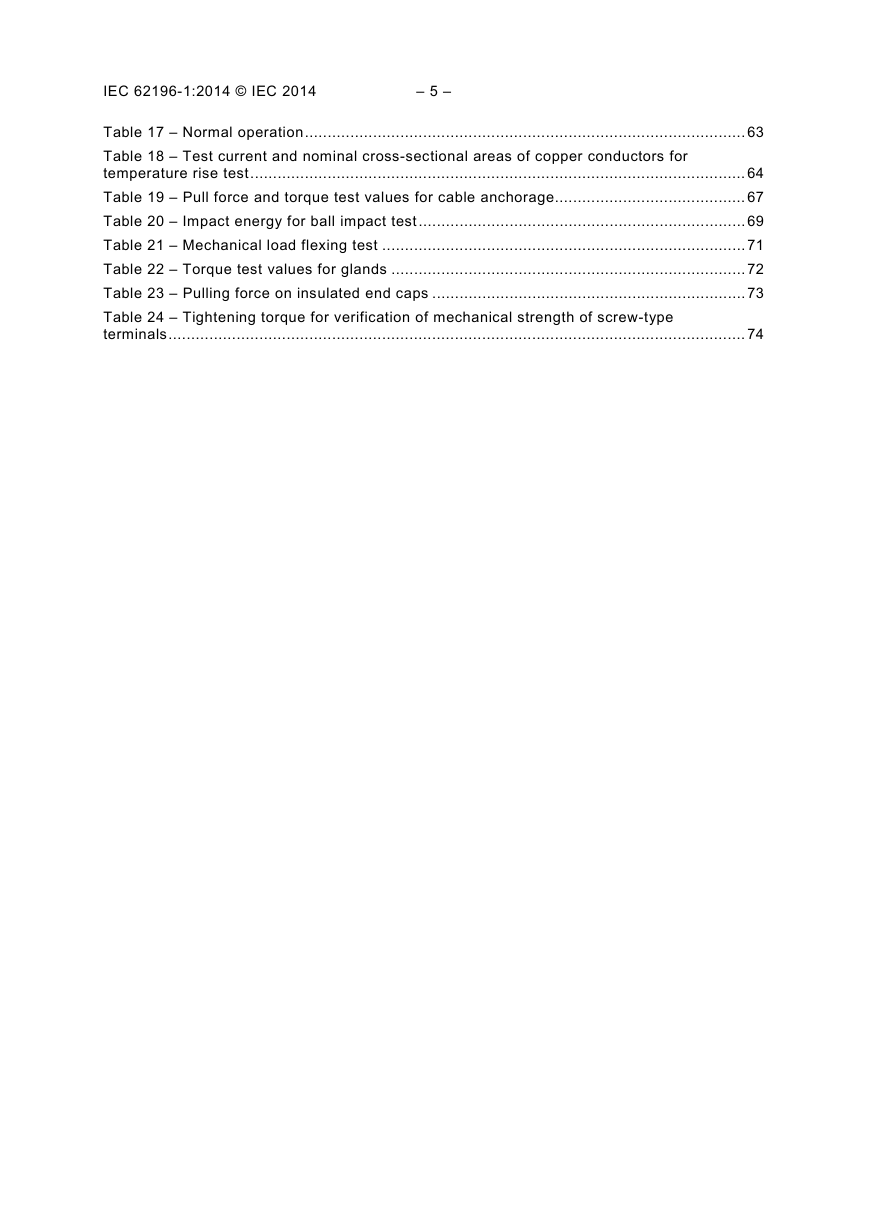
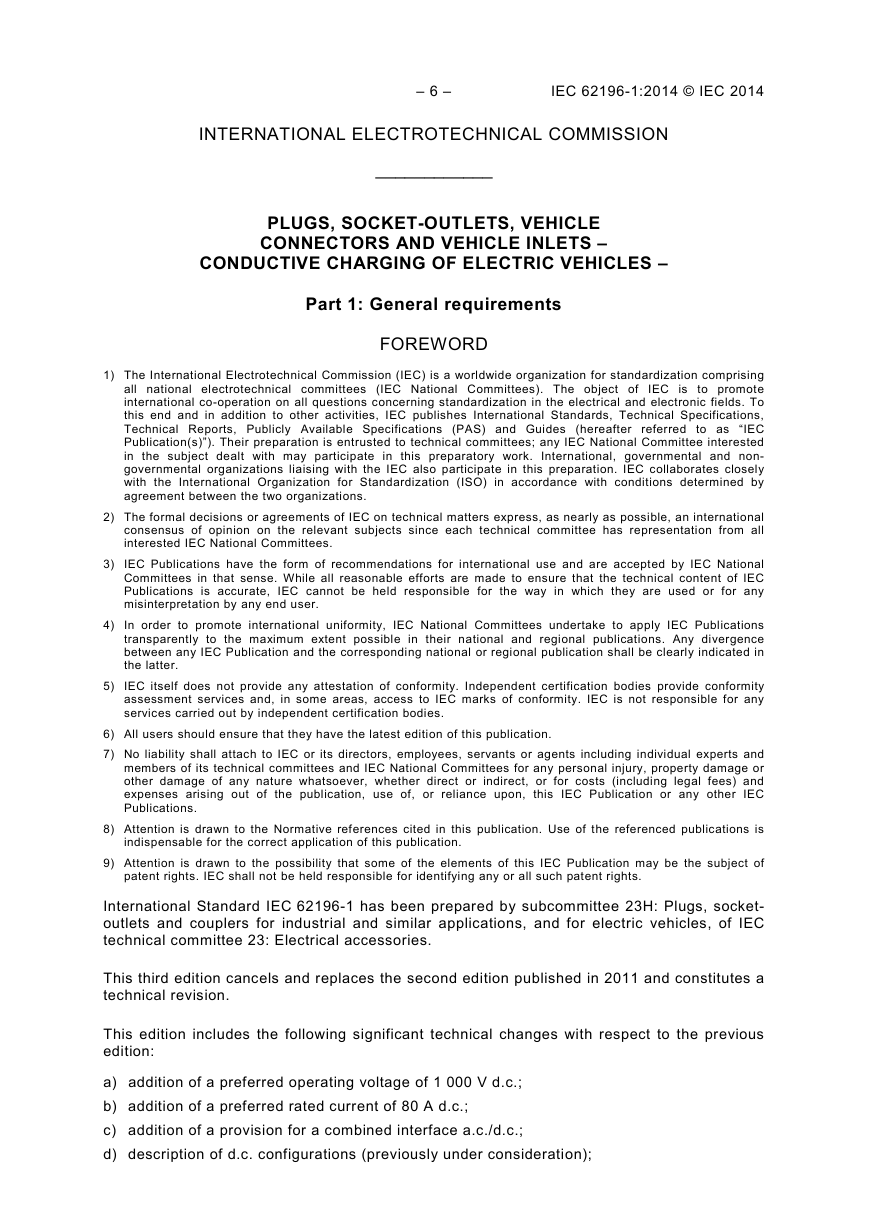








 2023年江西萍乡中考道德与法治真题及答案.doc
2023年江西萍乡中考道德与法治真题及答案.doc 2012年重庆南川中考生物真题及答案.doc
2012年重庆南川中考生物真题及答案.doc 2013年江西师范大学地理学综合及文艺理论基础考研真题.doc
2013年江西师范大学地理学综合及文艺理论基础考研真题.doc 2020年四川甘孜小升初语文真题及答案I卷.doc
2020年四川甘孜小升初语文真题及答案I卷.doc 2020年注册岩土工程师专业基础考试真题及答案.doc
2020年注册岩土工程师专业基础考试真题及答案.doc 2023-2024学年福建省厦门市九年级上学期数学月考试题及答案.doc
2023-2024学年福建省厦门市九年级上学期数学月考试题及答案.doc 2021-2022学年辽宁省沈阳市大东区九年级上学期语文期末试题及答案.doc
2021-2022学年辽宁省沈阳市大东区九年级上学期语文期末试题及答案.doc 2022-2023学年北京东城区初三第一学期物理期末试卷及答案.doc
2022-2023学年北京东城区初三第一学期物理期末试卷及答案.doc 2018上半年江西教师资格初中地理学科知识与教学能力真题及答案.doc
2018上半年江西教师资格初中地理学科知识与教学能力真题及答案.doc 2012年河北国家公务员申论考试真题及答案-省级.doc
2012年河北国家公务员申论考试真题及答案-省级.doc 2020-2021学年江苏省扬州市江都区邵樊片九年级上学期数学第一次质量检测试题及答案.doc
2020-2021学年江苏省扬州市江都区邵樊片九年级上学期数学第一次质量检测试题及答案.doc 2022下半年黑龙江教师资格证中学综合素质真题及答案.doc
2022下半年黑龙江教师资格证中学综合素质真题及答案.doc